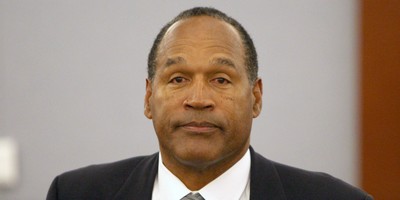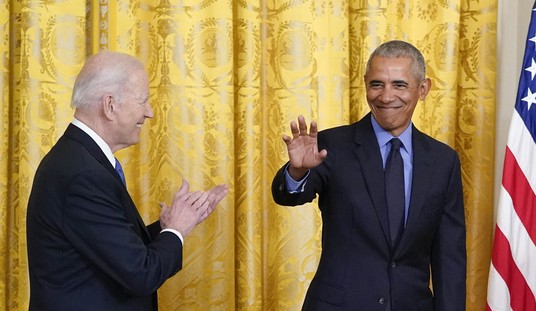Among Republican presidents, who counts as the top vote-getter of all time? The surprising answer to that question provides important perspective for todays efforts to rebuild the GOP.
In terms of raw votes, George W, Bush is the obvious champion: in 2000 and 2004, he won a combined total of 112.5 million votes, easily topping the combined total for second-place finisher Ronald Reagan (with 102.7 million for 1980 and 84). The expansion of the electorate meant that Bush drew more votes even while winning lower percentages. In a growing country, with more voters showing up at the polls, even John McCains losing effort in 2008 drew a million more votes than Ronald Reagans historic 49 state sweep in 1984.
In terms of gauging popularity or effectiveness as a party leader, however, the total number of voters who cast ballots for a candidate obviously means less than the percentage the candidate draws of all voters who went to the polls that year. Surely, in those percentage terms Ronald Reagan (deservedly beloved by all Republicans) counts as the reigning GOP title holder, right?

Actually, no.
In his two presidential campaigns as Republican nominee, Reagan drew a combined percentage of 109.5 (representing 50.7% in 1980, and 58.8% in 1984). Meanwhile, Dwight Eisenhower, largely forgotten by todays GOP, actually did substantially better with his combined percentage of 112.6 (55.2% in 1952, followed by an even more resounding 57.4% in 1956).
Ikes amazingly successful political career (he never ran for elective office of any kind beyond his two crushing presidential victories) puts him in a class that no other Republican politician can approach. Among all two term GOP presidents, the combined victory percentages are dramatically lower than Ikes peerless 112.6 -- just 95 for Abraham Lincoln, 109 for U.S. Grant, 103 for William McKinley, and 98.4 for George W. Bush. Even the phenomenally popular Theodore Roosevelt, in his only successful presidential race in 1904 (after succeeding the assassinated McKinley), drew 56.4% of the vote against a listless, little-known Democratic opponent (Judge Alton B. Parker) less than Ikes big margin in 1956, with 57.4%. Whats more, Eisenhowers energetic and widely admired opponent Adlai Stevenson challenged the president after Ike had suffered a major heart attack, but Stevenson still carried only 7 states (all in the South), compared to thirteen states that went for TRs opponent, Parker.
Recommended
Two other factors indicate the scope of Eisenhowers electoral achievement. Unlike, later GOP candidates (very much including Richard Nixon, Ronald Reagan and both Presidents Bush) he campaigned at a time when Republicans had made few inroads into Democratic control of the solid South. As a result of the Civil War and the nightmare of Reconstruction, many citizens of the eleven states of the old Confederacy (Alabama, Arkansas, Florida, Georgia, Louisiana, Mississippi, North Carolina, South Carolina, Tennessee, Texas and Virginia) still viewed the designation Republican as something of a curse word, and few GOP candidates even bothered to campaign in Dixie. With these Southern states representing nearly a fourth of the electoral votes (128 of 531 total electoral votes in 1952, the time of Ikes first campaign), and with these crucial electoral votes going nearly automatically to Democrats, any successful Republican would need to win by overwhelming margins in the rest of the country.
In fact, leaving out the former Confederate states, Ike would have won in 1952 by 385 to 18 electoral votes, and in 1956 by 390 to 13. Outside the Deep South, Eisenhower lost only the border states of Missouri in 56, and Kentucky and West Virginia in 52. He carried all the other states Northeastern, Midwestern, Plains States, Southwestern, Rocky Mountains, Pacific Coast, and even Texas, Virginia and Florida twice.
If the Republican Party had been fully active and organized in states that Ike and his managers more or less conceded, and if he had at least split the votes in conservative states like Mississippi and Alabama and Georgia, his overall winning percentages in both his elections would almost certainly have soared above 60%, giving him an even more commanding lead as the top GOP vote-getter, ever.
Conventional wisdom explains his success as a reflection of personal popularity, based on his heroic leadership as top commander of the European theatre in World War II. The common verdict is that Eisenhower never became an effective party leader, maintaining his own above-the-fray, non-partisan image and transferring little of his clout to his Republican colleagues on the Congressional level.
These ubiquitous conclusions are flat-out wrong, constituting the second little-recognized aspect of the great generals political accomplishments. In fact, Ikes leadership as commander of his party brought the GOP to stronger, more durable positions in both houses of Congress than Republicans had enjoyed at any time in the previous 20 years; in fact, it took another 34 years after Eisenhowers departure before Republicans returned to comparably powerful positions in both houses.
The initial victory for Ike in 1952 gave the GOP narrow control in both the House (by three votes) and the Senate (by one vote). In subsequent elections in 54 and 56 the Democrats took control of the Senate (by only a single vote, both times) and the House, but for the next four years the GOP stayed within striking distance (not more than 17 votes away) of regaining the majority. Then in 1958, the sixth year of Ikes presidency, a severe recession brought the Democrats huge gains49 seats in the House, 15 in the Senate.
Reagan also suffered debilitating losses in his sixth year in office losing seven Senate seats to give the Democrats control. Despite his reputation as a peerless party leader, Reagan worked with a total of 924 fellow Republicans who were elected or re-elected to the Senate and the House during his eight years as president. Eisenhower did notably better for Congressional Republicans: keeping the GOP close to control in both houses for six of his years, and helping elect a total of 960 Republicans (36 more than Reagan) in the four elections he led the party.
What makes this feat all the more noteworthy is, again, the odd old phenomenon of the solid South. Reagan Republicans (including prominent leaders like Jesse Helms, Phil Gramm, Trent Lott, Strom Thurmond and John Warner) could compete very successfully in Dixie. Under Reagans leadership, the GOP solidified the gains begun under Nixons Southern Strategy and became the dominant party in the region. Even with this advantage, however, the GOP never came close to House control under the Gipperreaching a peak of 182 seats (36 seats short of a majority) in the Reagan landslide of 84.
Under Eisenhower, however, the Republicans managed to closely balance the Democrats (maintaining more than 200 house seats, and staying within a single vote of Senate control), for six years before the debacle of 1958. To get some sense of the magnitude of this accomplishment, consider the one-sided numbers from the states of the old Confederacy: during the Eisenhower administration, the Republicans never elected a single Senator from these 11 states, meaning the count stood at 22 to 0 for Democrats. On the House side, with 105 seats from the old Confederate states, the Democrats won at least 99 in every election (for an advantage of at least 93 seats from the Old South alone!) If the party had managed to contest these Southern seats in any meaningful sense, winning, say, 40% of them, the GOP would have enjoyed comfortable majorities of both House and Senate for at least six of Ikes eight years.
This look back at long-ago, mostly forgotten Congressional battles indicates the stunning strength of the 1950s GOP in every region outside the South especially the Northeast, Midwest and Far West. The Eisenhower Republicans managed the political miracle of shattering the sweeping, overwhelming Democratic control that had been achieved by FDR. In 1936, a mere sixteen years before Ike came to the capital, the Dems enjoyed not just two-thirds majorities of both Houses, but more than three-fourths majorities---with 75 of 96 Senators (at the time), and an unprecedented 333 of 435 members of the House.
How did Ike do it? How did he change his party, and the national electorate, so dramatically? How did his leadership restore the GOP as a real, long-term competitor for national power for the first time since the New Deal? How did he manage to energize not only his own wildly successful campaigns, but also the candidacies of countless Republican contenders for the Senate and the House, even in districts and states long-controlled by Democrats?
The answer to those questions, suggested in next weeks column, should help to inspire and guide todays Republicans who hope and toil for a comeback of our own.

























Join the conversation as a VIP Member